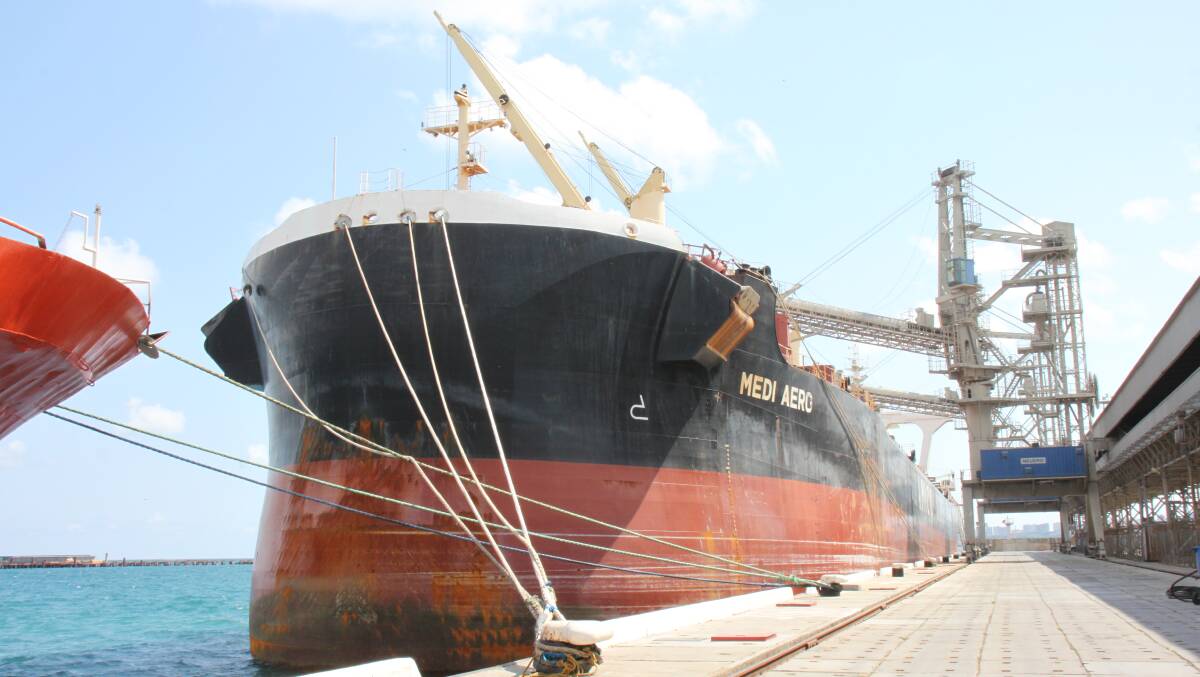
INSATIABLE grain demand from east coast domestic markets means there is likely to be a record amount of shipments moving from Western Australia to the east, smashing the previous record set in 2003, following the horror 2002 drought.
Subscribe now for unlimited access to all our agricultural news
across the nation
or signup to continue reading
A spokesperson for CBH, the leading bulk handler and port operator in WA, said 2003 was the last time a similarly large volume of grain had been shipped from the west to eastern ports, but added this year would exceed the 2003 volumes.
All up, CBH has sent around 1.15 million tonnes of grain to the ports of Brisbane, Newcastle and Port Kembla.
Around 650,000 tonnes has gone since October 1, when CBH’s new financial year begins.
And the demand shows no signs of slowing, with CBH estimating that all up around 2m tonnes will move from its ports at Geraldton, Kwinana, Albany and Esperance to eastern markets.
This is in spite of a slight upgrade in national crop production from analysts INTL FC Stone.
There was a modest increase in wheat production estimates, up 130,000 tonnes to 17m tonnes, with a more meaningful upgrade in barley, up 530,000 tonnes to 7.76m tonnes.
However, the increases have virtually all come from Western Australia, meaning the overall supply and demand dynamics, including regional shortages in drought hit parts of the east coast, will remain.

In terms of the final level of WA grain moving east, Jimmy Wilson, CBH chief executive, cautioned the figure was only an estimate at this stage, with final figures influenced by domestic and international markets, along with east coast crop prospects.
"I am happy to estimate, but it is an estimate and estimates usually end up being wrong, but overall the volume we ship across could be north of 2m tonnes," he said.
The demand for the interstate imports come as grain users on the east coast hunt around for supply.
While there will be some summer crop produced in places such as the Darling Downs, many places have missed summer rain and have endured a searing summer meaning sorghum production will not be enough to make up all the shortfalls.
Further south, hot and dry conditions mean there is an emerging feed shortage in Victoria, which previously had been relatively self-sufficient.
Tight water allocations mean there is unlikely to be much new fodder created over late summer, with many praying for an early autumn break, although there are pockets in the south with good hay and silage reserves.
There is plenty of grain to come out of the west – following the state’s second biggest harvest on record.
Mr Wilson predicted final receivals in the range of 16.3-16.4m tonnes.
He said the strong prices, combined with good yields, meant a solid year for WA growers.
"Prices are big and it is not often you end up with a strong, positive harvest like we had and high prices. It is a unique set of circumstances that have resulted in this,” he said.
It has not only been domestic factors driving prices higher, according to Mr Wilson, but lower crop production among key export competitors such as Europe.
"There has been weakness in Europe and their harvest and Black Sea grain that would normally go into our contestable markets has actually gone into Europe.
"As a result there is less competition in our markets, such as South East Asia.”
At present WA wheat prices for APW grade are around $350 a tonne, compared with $450/t for feed wheat delivered Darling Downs on the east coast.

